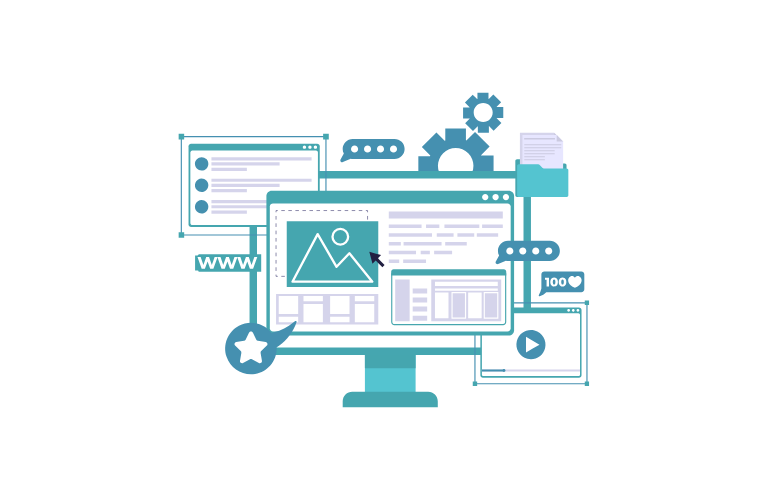If you are a developer and want to build a WordPress plugin to customize your website and provide it to all WordPress users for a specific use case, then this WordPress Plugin Development article is well-suited for you. You will not master plugin development after reading this, but you will understand how plugins are built.
WordPress is a very powerful tool with a vast plugin library, and you can also create your own plugin. In this article, I have covered the essential things you need to know and consider as a beginner.
“Or is article not beneficial for you for learning WordPress Plugin Development? so, scroll down to the end and access the full, in-depth plugin development YouTube playlist.”
Table of Contents
Prerequisites
Before starting plugin development, you’ll need:
- Basic PHP knowledge
- Understanding of WordPress core functions
- WordPress development environment (local server like XAMPP or MAMP)
- Text editor or IDE (VS Code, PhpStorm)
WordPress Plugin Development Basics
Plugin Structure
A typical WordPress Plugin Development follows this basic directory structure:
my-plugin/
│
├── my-plugin.php # Main plugin file
├── readme.txt # Plugin information file
├── includes/ # Additional PHP files
│ └── class-plugin-core.php
├── admin/ # Admin-related files
│ ├── class-admin-settings.php
│ └── css/
│ └── admin-styles.css
├── public/ # Public-facing files
│ ├── js/
│ └── css/
└── languages/ # Translation filesCreating Your First WordPress Plugin
Plugin Header
Every WordPress Plugin Development process requires a header in the main plugin file:
<?php
/*
Plugin Name: My First Plugin
Plugin URI: https://example.com/my-plugin
Description: A simple demonstration plugin
Version: 1.0.0
Author: Your Name
Author URI: https://example.com
License: GPL2
*/
// Prevent direct file access
if (!defined('ABSPATH')) {
exit;
}Initialization Hooks
1. init Hook
Purpose: General initialization for plugins and themes
Use Cases:
- Register custom post types
- Add new taxonomies
- Initialize custom functionality
add_action('init', 'custom_init_function');
function custom_init_function() {
// Register custom post type
register_post_type('book', [
'public' => true,
'label' => 'Books'
]);
// Register custom taxonomy
register_taxonomy('genre', 'book', [
'public' => true,
'label' => 'Book Genres'
]);
}2. admin_init Hook
Purpose: Backend-specific initialization
Use Cases:
- Register plugin settings
- Add admin sections
- Perform administrative tasks
add_action('admin_init', 'admin_initialization');
function admin_initialization() {
// Register a new setting
register_setting('plugin_options', 'my_plugin_settings');
// Add settings section
add_settings_section(
'plugin_main_section',
'Main Plugin Settings',
'section_callback',
'my-plugin-page'
);
}3. wp_loaded Hook
Purpose: After WordPress core is fully loaded
Use Cases:
- Complex initialization tasks
- Final setup before page rendering
add_action('wp_loaded', 'after_wordpress_load');
function after_wordpress_load() {
// Perform tasks after complete WordPress initialization
// Example: Complex permission checks or global configurations
}WordPress Plugin Lifecycle Hooks
1. register_activation_hook()
Purpose: Execute tasks when plugin is activated
Use Cases:
- Create database tables
- Set default plugin options
- Initial setup requirements
register_activation_hook(__FILE__, 'plugin_activation_setup');
function plugin_activation_setup() {
// Create custom database table
global $wpdb;
$table_name = $wpdb->prefix . 'custom_plugin_data';
$charset_collate = $wpdb->get_charset_collate();
$sql = "CREATE TABLE $table_name (
id mediumint(9) NOT NULL AUTO_INCREMENT,
data text NOT NULL,
PRIMARY KEY (id)
) $charset_collate;";
require_once(ABSPATH . 'wp-admin/includes/upgrade.php');
dbDelta($sql);
}2. register_deactivation_hook()
Purpose: Cleanup when plugin is deactivated
Use Cases:
- Remove temporary data
- Log deactivation
- Perform cleanup tasks
register_deactivation_hook(__FILE__, 'plugin_deactivation_cleanup');
function plugin_deactivation_cleanup() {
// Remove plugin-specific options
delete_option('my_plugin_settings');
}3. register_uninstall_hook()
Purpose: Complete removal of plugin data
Use Cases:
- Delete all plugin-related database entries
- Remove custom tables
- Comprehensive cleanup
register_uninstall_hook(__FILE__, 'plugin_complete_removal');
function plugin_complete_removal() {
global $wpdb;
// Delete all plugin-related options
delete_option('my_plugin_settings');
// Drop custom tables
$wpdb->query("DROP TABLE IF EXISTS {$wpdb->prefix}custom_plugin_data");
}Admin-Related Hooks
1. admin_menu
Purpose: Add custom admin menu pages
Example:
add_action('admin_menu', 'create_custom_menu_pages');
function create_custom_menu_pages() {
add_menu_page(
'Plugin Settings',
'My Plugin',
'manage_options',
'my-plugin-settings',
'render_settings_page',
'dashicons-admin-generic',
99
);
}2. admin_notices
Purpose: Display admin notifications
Example:
add_action('admin_notices', 'display_admin_notifications');
function display_admin_notifications() {
echo '<div class="notice notice-success">
<p>Welcome to My Awesome Plugin!</p>
</div>';
}Frontend Rendering Hooks
1. wp_enqueue_scripts
Purpose: Load frontend assets
Example:
add_action('wp_enqueue_scripts', 'load_frontend_assets');
function load_frontend_assets() {
wp_enqueue_style('my-plugin-style', plugin_dir_url(__FILE__) . 'css/style.css');
wp_enqueue_script('my-plugin-script', plugin_dir_url(__FILE__) . 'js/script.js', ['jquery'], '1.0', true);
}Best Practices
- Always sanitize and validate input
- Use WordPress coding standards
- Implement proper security checks
- Make plugins translatable
- Handle plugin activation and deactivation
- Create uninstall script
Here is the YouTube playlist to master and understand all the basics and advanced functionality of plugin development from scratch. You can follow this.
Debugging
Use WordPress debugging tools:
- Enable WP_DEBUG in wp-config.php
- Use error_log() for logging
- Utilize WordPress’s built-in logging functions
Deployment
- Test thoroughly in a development environment
- Create a readme.txt file
- Consider submitting to the WordPress plugin repository
- Provide clear documentation
If you have made it to the end, I hope you now have a basic understanding of WordPress Plugin Development and can begin your journey with this knowledge. Remember that plugin development requires practice and patience, so start coding and keep going. 👍




